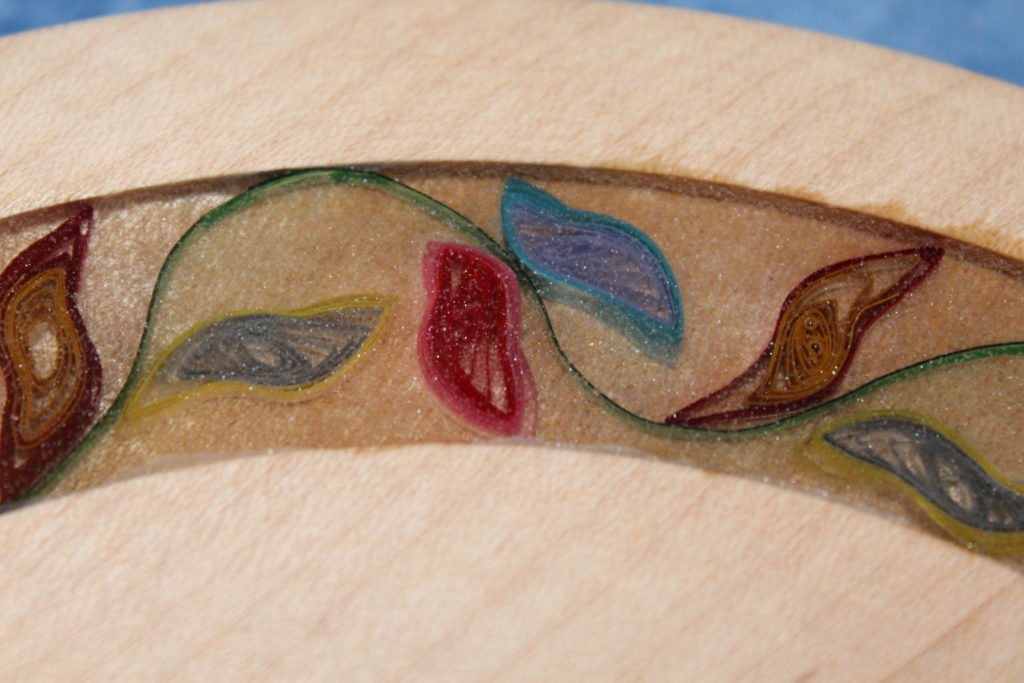The requirements for my woodturning club’s next president’s challenge is pretty simple: Put a hole in a perfectly good bowl. There were some subtleties, like no filling the hole and natural holes don’t count, but there wasn’t any restriction on how the holes were made and nothing that said there could only be ONE hole. Since I’ve been taking a more active role in the club, I kinda feel some pressure to do something creative and not just phone it in, so I started thinking about what was possible.
I thought about drilling a bunch of randon holes in the blank, then watch as they changed shapes as the bowl was turned. That didn’t seem like a very “controlled” project and it could easily end up looking really bad. I thought about making another birdhouse, since the hole for the birds to use would qualify for the challenge. That seemed like “same old same old”, didn’t feel fun, and the thought only lasted a few seconds. I thought about doing some kind of resin project, since I hadn’t done one of those in awhile. There really wouldn’t be any point to using resin, since the whole point was adding a hole in whatever gets made. I thought about making a clock and then drilling holes where the hour markers would be, since that would be something I haven’t made before. That seemed like a “someday” project, because I don’t currently have the clockworks that would be needed and I’m most likely going to do something with segmenting and resin inlays when I get around to making myself a clock. I thought about making a wizard’s pipe, but I’m sure the molds for bending the stem didn’t make the move. I thought about making a kids toy of some kind like a whistle or ring stacking thingy, but decided that would just open up a fight between the kids over which grand baby got to have it. I even thought about making a bucket with a hole in it, but didn’t want that stupid song running through my head.
I finally decided on doing some kind of piercing project. The gist of a piercing project is to turn something very thin, then take a power carving tool and make little holes in the project, aka piercing the wood. It can be a bowl, a vase, a goblet, pretty much anything. Some people do really elaborate patterns, some only pierce the wood on part of the project, and some people seem to see just how much wood they can remove, making the final project extremely fragile. Since all I have to use for the piercing (for now) is a cordless Dremel, I decided to go a little smaller scale and pierce an accent ring around a bowl.
The wood is cherry, and was a roughed out bowl blank given to me by another club member when I bought some equipment from him. (THANKS, Terry!) Since it was already rough turned, the basic shape of the bowl was set. Initially, I didn’t want the entire bowl to be thin, so I only thinned part of the bowl (from both the inside and outside) of where I wanted the piercing to go. The only bits I had to use were cheap “diamond” bits, but they were never really intended to do this kind of work, or this extensive of work. They got so hot they burnt the wood and ended up breaking down (I think there were four bits ruined by the time the piercing was done). The up side is the burning from the bits actually burned the inside of the holes, making the piercing stand out more because of the black that was left.
After the piercing was done, I put it back on the lathe to refine the outside shape, finish turning the bottom of the bowl, sand, sand more, then hand sand, then sand more, and finally take the tenon off. Below is the end result. I had wanted to use a friction polish, some laquer, then buff the whole thing until is was absolutely smooth, but all of that “stuff” is still packed away and I really don’t feel like digging it out. I settled on several coats of spray lacquer for a finish.
I think I like it, but really wish I would have added some color, if not on the whole bowl, at least on the strip that is pierced.







